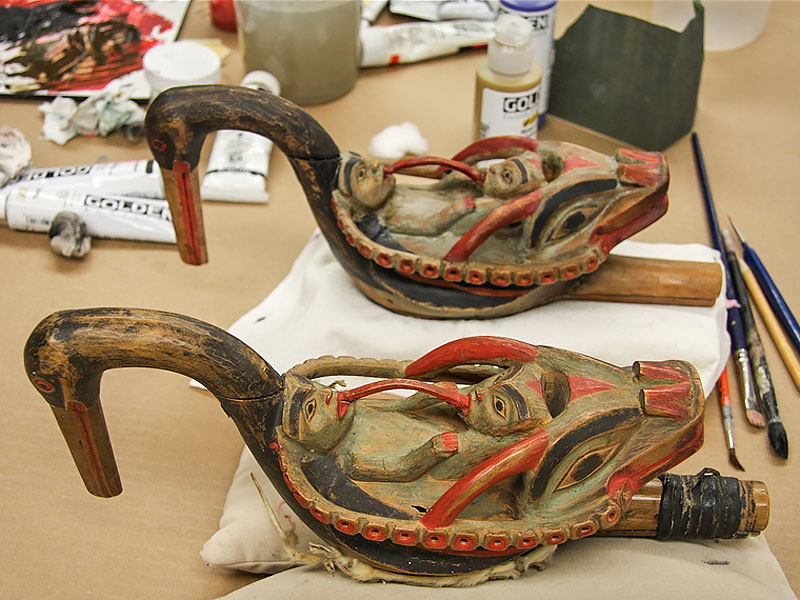Using New Technologies
CASE STUDY
3D Replication: Emerging Technologies for Communities
Eric Hollinger, Smithsonian National Museum of Natural History Anthropology Dept.
Three-dimensional reproduction of objects in museums is nothing new. During the hey-days of museum collecting community artists were often asked to make reproductions of items for the museums. The reproductions ranged from bows and arrows to small scale models of northwest coast longhouses and canoes. Museums themselves sometimes made reproductions by casting with plaster and later with epoxies and resins. Now, advances in computing technology have allowed the creation of digital techniques for digitally documenting and reproducing objects in 3D.
Digital files record objects in extreme detail by mapping them with millions of points of data positioned in space as x, y and z coordinates, are created using laser scanners, CT-scanners or photogrammetry. These 3D files can then be archived as a form of documentation and security, they can be analyzed using morphometric methods, or they can be used to make 3D images or animations for web sites or exhibits.

The original rattle is in the foreground. The painted replica rattle is seen behind the original in this photograph.
This video shows the unpainted replica of the original rattle, made by scanning and 3D printing of the original.
In some instances, including repatriation-related cases, 3D files have been utilized by tribes and museums to make 3D replicas of objects. Some tribes have had 3D prints made of funerary objects so the originals could be reburied while the 3D print can still educate and inform about the culture and the significance of such objects. In some cases, museums have been allowed to retain a reproduction of an item repatriated to a community. Another form of 3D reproduction is made by milling or carving the reproduction from wood using the digital files as the guide for the carving bit. Milled or printed objects can then be painted or have other materials inlaid or attached to them. This method has been used to reproduce models for exhibit of ceremonial objects including a Tlingit crest hat and shamanic objects.
Many museums are investing in 3D digitizing technologies and may be able to provide services to communities interested in having 3D digital files created for objects in their collections or producing 3D reproductions of objects. Some communities are acquiring their own equipment for digitization and replication and collection facilities may allow communities to apply their own resources to digitizing and replicating objects.
3D digitization of cultural objects is an emerging field which poses some challenges and ethical responsibilities for those involved in such projects. Unlike casting which relies on one master mold, digital files can be easily copied and disseminated widely and anonymously. Some tribes have posted 3D files of funerary objects on the web for anyone in the world to download and print. Others are more restrictive and allow 3D files to be seen and studied but do not allow reproductions to be made without explicit permission. When working with museums on 3D projects, it is important to understand what controls or restrictions there will be on the digital files and under what circumstances they will be utilized. As with all areas of collaboration, the more open and frank the discussions and transparent the interests of all parties, the more likely a trusting and productive relationship can be developed. 3D digitization and replication opens a whole new world of possibilities but also carries a few new responsibilities for all involved.
